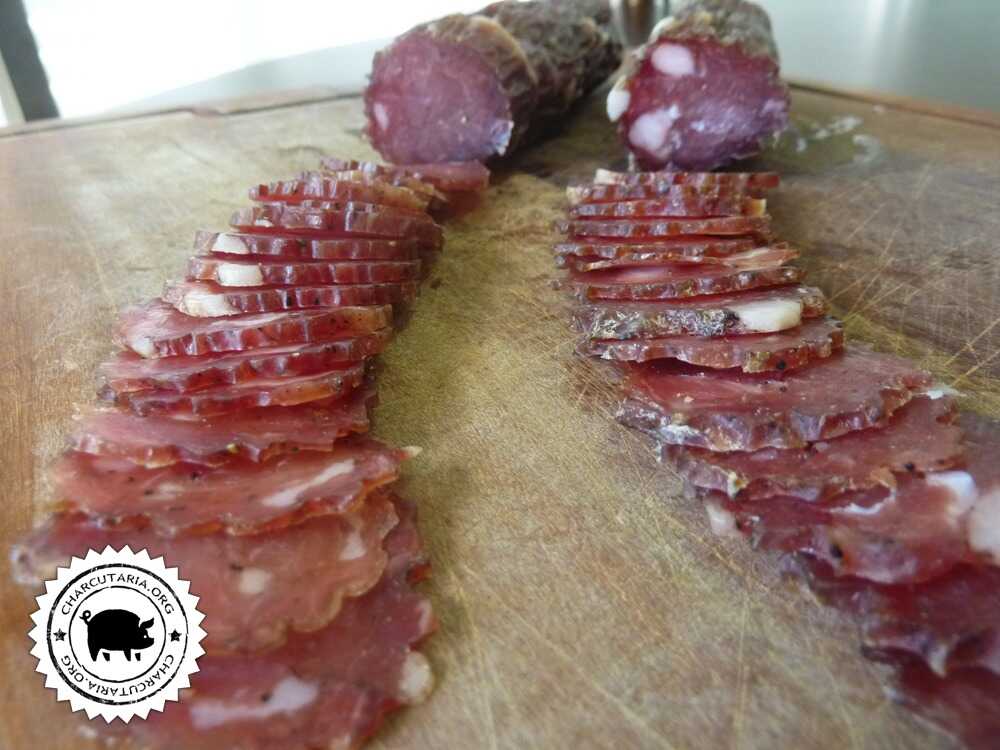
Este salame foi feito para testar uma solução alternativa à cura tradicional em ambiente climatizado, com temperatura, umidade e fluxo de ar controlados. Também é uma alternativa ao uso do papel manteiga, que é um péssimo invólucro pois não foi projetado para isso, não consegue controlar corretamente a perda de umidade e não tem aderência ao produto, deixando uma camada entre o papel e o salame que é propícia para o surgimento de mofos indesejados. A geladeira é muito seca, por isso é importante adaptar um ambiente em que a umidade seja preservada. A ventilação também é fundamental para que a dinâmica de troca de umidade ocorra.
A primeira tentativa foi feita com uma caixa de papelão, que não deu certo, a umidade não foi preservada acredito que pela porosidade e capacidade de puxar água do papelão. A segunda solução testada, que deu certo, foi uma caixa plástica com uma ventoinha de computador ligada a uma bateria recarregável e um carregador de 3,5V. Esta adaptação criou um ambiente que manteve a umidade elevada(perto de 80%) e a ventilação leve necessária para a maturação correta do salame. A temperatura baixa da geladeira atrasa um pouco a maturação, mas não degrada a qualidade do salame.
A caixa precida ter a altura compatível com o salame, neste caso a caixa tem 33cm de altura e a tripa dos salames tem 30cm de comprimento, com o encurtamento pelas amarrações das extremidades o tamanho ficou perfeito. Adapte conforme sua necessidade.
É possível controlar a umidade abrindo ou fechando uma fresta na tampa da caixa. No início o salame é muito úmido e a umidade aumenta rapidamente. Abra um pouco a tampa até a umidade estabilizar perto de 80%. Caso a umidade fique baixa basta fechar a tampa. Checar uma ou duas vezes por dia é o suficiente.
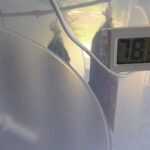
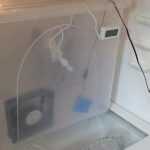
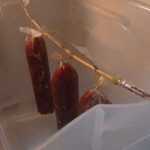
Ingredientes do salame artesanal feito na geladeira
- Pernil – 1000g;
- Sal – 20g – 2%;
- Pimenta do reino – 2g – 0,2%;
- Gengibre em pó – 1g – 0,1%;
- Nós moscada em pó – 1g – 0,1%;
- Alho desidratado – 4g – 0,4%;
- Erva doce – 2g – 0,2%;
- Sal de cura 2 (6% de nitrito, 3% de nitrato e 93,75% de sal) – 2,5g – 0,25%;
- Antioxidante (com eritorbato de sódio) – 2,5g – 0,25%;
- Vinho tinto – 20g – 2%.
Preparo do salame artesanal feito na geladeira
Cortar a carne e a gordura finamente com uma faca ou moer em disco fino;
Misturar bem todos os ingredientes até que a massa do salame fique pegajosa. Aproximadamente 2 minutos. Pode misturar com as mãos, utilizando uma batedeira orbital ou amassadeira.
Embutir em tripa de colágeno ou bovina natural reta calibre entre 45mm e 60mm, dependendo da espessura desejada no salame. Neste caso utilizei a tripa de colágeno calibre 45mm.
Caso utilize a tripa de colágeno, hidratar por alguns minutos em água com 10% de sal.
Faça furos com um alfinete/agulha ou pricker para remover bolhas de ar que ficaram presas entre a tripa e a massa do salame. As bolhas de ar oxidam a gordura e criam regiões com coloração diferente e gosto de ranço, por isso é preciso removê-las.
Pese cada salame e anote o peso inicial.
O uso da cultura starter é opcional. Caso utilize o vinho a fase de fermentação é opcional pois o vinho funciona como acidulante. A fermentação no salame gera ácido lático e protege pela acidificação. A cultura starter agrega sabor e aroma pela ação enzimática fundamental na formação e estabilidade de cor do produto final. A cultura starter também possui atividade lipolítica e proteolítica, envolvidas na formação de aroma. Utilize caso queira acrescentar mais qualidade ao produto.
A geladeira é muito seca, por isso é importante adaptar um ambiente em que a umidade seja preservada. A ventilação também é fundamental para que a dinâmica de troca de umidade ocorra. A caixa plástica adaptada com uma ventoinha cria um ambiente que consegue manter a umidade elevada e a ventilação necessária para a maturação correta do salame. A temperatura da geladeira geralmente fica em torno de 4ºC a 7ºC, não é a temperatura ideal mas o mais crítico é a umidade e a ventilação, portanto é plenamente possível fazer um ótimo salame na geladeira.
Deixe pendurado dentro da caixa na geladeira até que o salame tenha perdido entre 35% e 40% do peso inicial.
Perda de peso dos salames
SALAME 1
peso inicial: 353g
peso final: 186g
perda: 47%
SALAME 2
peso inicial: 363g
peso final: 188g
perda: 48%
SALAME 3
peso inicial: 277g
peso final: 141g
perda: 49%
Resultado final dos salames
Os salames ficaram ótimos, sabor e consistência excelentes. A conclusão é que é plenamente possível fazer um ótimo salame na geladeira, basta adaptar um ambiente com uma ventilação leve e que mantenha a umidade elevada.
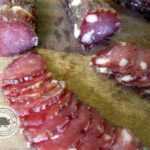
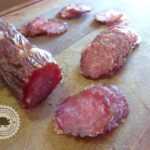

-
 Sal de cura 1R$ 8,00
Sal de cura 1R$ 8,00 -
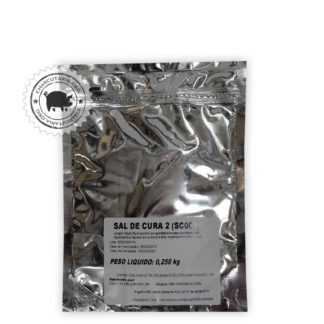 Sal de cura 2R$ 8,00
Sal de cura 2R$ 8,00 -
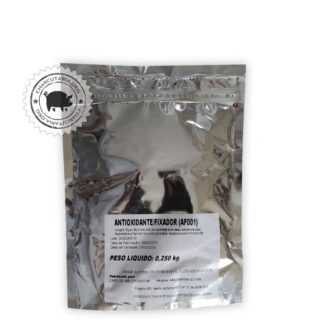 Antioxidante FixadorR$ 23,00
Antioxidante FixadorR$ 23,00 -
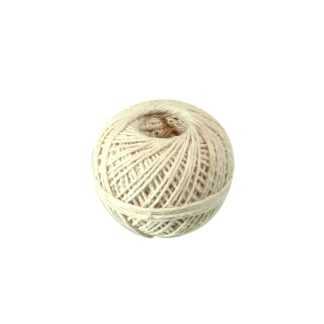 Barbante culinárioR$ 7,90
Barbante culinárioR$ 7,90 -
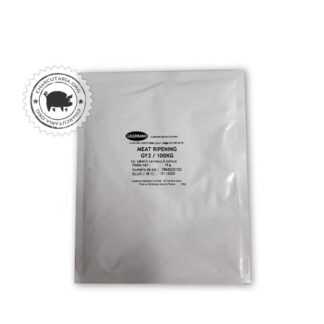 Cultura StarterR$ 69,90
Cultura StarterR$ 69,90 -
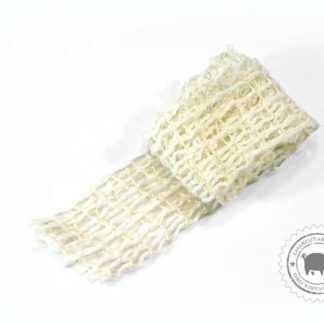 Rede elástica culinária 50mmR$ 15,00
Rede elástica culinária 50mmR$ 15,00 -
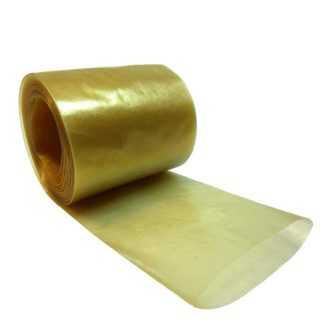 Tripa de colágeno 45mm rolo 5 metros salameR$ 25,00
Tripa de colágeno 45mm rolo 5 metros salameR$ 25,00 -
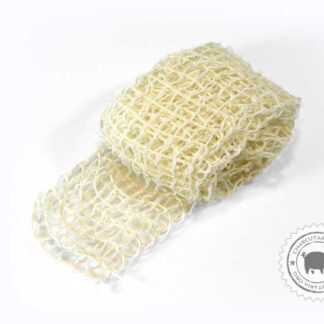 Rede elástica culinária 65mmR$ 18,00
Rede elástica culinária 65mmR$ 18,00 -
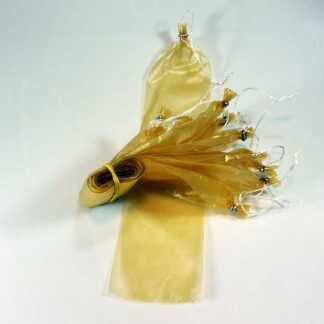 Tripa de colágeno salame 45mm 10 unidades amarradasR$ 22,00
Tripa de colágeno salame 45mm 10 unidades amarradasR$ 22,00 -
 Tripa de colágeno 80mm copa e salameR$ 29,90
Tripa de colágeno 80mm copa e salameR$ 29,90 -
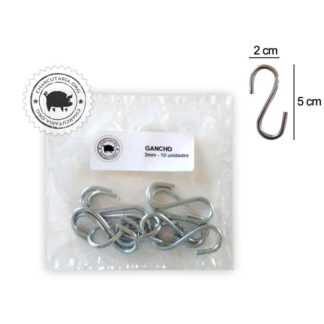 Gancho GalvanizadoR$ 12,00
Gancho GalvanizadoR$ 12,00 -
 Tripa de colágeno salame 50mm 10 unidades amarradasR$ 24,00
Tripa de colágeno salame 50mm 10 unidades amarradasR$ 24,00



Boa tarde…
Qual rede elastica devo utilizar na tripa de colágeno calibre 60 ?
Altair
A menor, a rede elástica 50 mm já vai servir. Essas medidas apresentadas das redes são as medidas contraídas, ou seja, elas esticam o dobro desse tamanho para conseguir colocar o produto dentro. A rede sempre tem que ser um pouco menor do que o produto para haver a compressão.
Olá, tudo bem?
Para maturação na geladeira precisa ou pode fazer a defumação antes?
Pode defumar antes, inclusive é bem recomendado pois ajuda na proteção. Com o mínimo de temperatura possível na defumação, para não cozinhar a carne.
Legal, obrigado pela informação.
Olá, qual a temperatura ideal para maturar na geladeira?
Oi, Caetano. O ideal é que a temperatura varie entre 12ºC e 14ºC. Mas o salame ainda vai maturar em temperaturas mais baixas, como 4ºC ou 6ºC. O importante é manter a umidade alta, perto de 80%.
Fiz o salame conforme orientação mas algo deu errado, ele ficou extremamente saboro mas a textura parece ressecada
Oi Alessandra. Podem ter alguns fatores que deixar o salame ressecado, com textura quebradiça. A carne pode ter sido congelada e descongelada de forma incorreta, danificando a estrutura da proteína, outro problema pode ter sido o excesso de acidificação, neste caso pode diminuir um pouco o uso do vinho para corrigir. Também pode fazer uso de uma cultura starter para controlar melhor a acidificação.
Bom dia Eduardo, Segui a receita desse salaminho, e estou com um problema de tempo de cura!
Fiz no dia 22/3 e, hoje fui fazer uma pesagem de amostra e para a minha surpresa todos os 6 estavam já com o peso ideal de 40% de redução! Fiz alguns furos para a saída das bolhas de ar. Sempre uso uma caixa plástica em tela filó bem fechada! coloquei numa área ventilada dentro de casa e utilizei um umidificador de ambiente com muito vapor jogando para o interior da caixa, pois o tempo aqui em BH está muito quente e seco! O que aconteceu? Já pode ser consumida? Desde já agradeço o retorno,
Abraços, Gilberto
Oi Gilberto. A única explicação que vejo para uma perda tão acelerada é a combinação de tempo seco e vento direto sobre os salames. Se a tripa for de calibre baixo a perda é mais acelerada também. Eu recomento que desligue o vento ou feche mais a passagem de ar do ambiente, deixe até perder uns 45%, depois embale em pvc ou vácuo e deixe na geladeira por uma semana para estabilizar a umidade interna. Depois pode comer sim, a perda de peso acelerada na verdade ajuda a proteger o salame mais rapidamente pela indisponibilidade de água para a proliferação de contaminações. Abraços.
Qual fabricante dessa cx plástica? De quantos litros?
Plasvale 25L Ref. 294
Bom dia. Sobre o tempo que o salame fica descansando por 24 a 48 horas para depois embutir, pergunto se não poderia embutir PRIMEIRO e DEPOIS deixar descansando?
Quais são as consequências dessa inversão na ordem?
Oi Jesus Papini. Pode moer, misturar bem e logo após embutir, não há restrição e não haverá diferença no produto final.
Eu coloquei uma ventoinha dentro da geladeira bem embaixo ao lado de um vaso de água. Será que ajuda?
Deve ajudar sim, mas a única maneira de saber com precisão é medindo a umidade próxima dos salames com um higrômetro.
Boa tarde, fiz meus salames e estou deixando aquele período em temperatura ambiente ventilado, queria saber se necessariamente preciso levá-los a geladeira para cura, e ainda necessicita enrolar em um papel manteiga, uma amigo meu disse que posso cura no ambiente mesmo, se for a geladeira não precisa papel manteiga. Obrigado e fico no aguardo
Há diversas receitas de salame, dependendo da técnica, espessura, aplicação de fumaça ou fermentação os salames vão ou não precisar de ambientes refrigerados. Temos receitas de alguns salames que foram feitos na geladeira sem papel manteiga ou fora da geladeira, veja abaixo:
https://charcutaria.org/receitas/receita-de-salame-colonial/
https://charcutaria.org/carnes/salaminho-misto-aperitivo-em-3-dias-receita-salame/
Boa noite. Parabéns pelo site e obrigado por compartilhar seus conhecimentos. Estou com uma dúvida: Os meus já perderam 47% do peso em 16 dias, pelo que vi em vários comentários do pessoal, isso ocorre devido à baixa umidade, certo. Pelo que vi nas suas respostas, teria que controlar a umidade deixando-a mais alta, né? Só que no meu caso estou fazendo eles direto na geladeira e estão embrulhados no papel manteiga e foram feitos com leite fermentado. A minha dúvida é se com este tempo de cura (16 dias) já posso consumi-lo com segurança ou se há um tempo mínimo para consumir? O sabor também fica melhor com cura por mais tempo ou é mais questão de textura apenas? Obrigado, forte abraço!
Oi wagner. Perdendo o peso desejado já é possível consumir, não há um tempo mínimo. A perda rápida na geladeira como comum realmente deve-se à baixa umidade. Possivelmente os seus salames fiquem com o exterior bem seco, mais duro, e o miolo mais mole, úmido. Na baixa umidade o exterior resseca rapidamente e impede que a umidade do meio migre para o ambiente. Mas isso não impede o consumo. Um grande abraço!
Boa noite, Eduardo. Obrigado pela resposta. Realmente ficou com esse aspecto mais seco por fora e mole por dentro. Mas o sabor ficou ok. Nas próximas vamos ver como sai. Valeu! Araço.
Tenho uma geladeira com controlador e consigo deixar a temperatura que desejo.
Assim seria necessário tbm a ventilação , ou por ficar em uma temperatura estável não tem necessidade, e não vai ser aberta até o final.
Oi Alcindo, mesmo no ambiente refrigerado é preciso uma ventilação bem leve e constante. A movimentação do ar é que possibilita a troca de umidade entre o produto e o ambiente.
Olá,
Tudo bom?
Será que consigo fazer nesta caixa uma Copa Lombo também?
Vejo muito exemplo de uso do papel manteiga. Mas gostei dessa ideia sua. Mas será que consigo uma Copa Lombo nesta caixa?
Oi Júnior Sena, pode fazer a copa desta forma, vai dar certo.
Boa tarde. Posso usar uma fonte de 12v ao invés da fonte de 3,6v?
Oi Luiz, pode sim. Aponte o vento para as laterais da câmara para que não incida vento intenso sobre os produtos.
Oi, boa noite. Primeiramente gostaria de parabenizar o seu site. É de uma ajuda incrível para nós que estamos iniciando nesse hobby incrível da charcutaria. Parabéns mesmo. Bom, minha dúvida é a seguinte: como calculo o peso do salame, eu faço isso com o peso inicial qual ele fica ao ser ensacado, ou conto depois dos 3 dias de fermentação na câmara? Digo isso porque vi que nesse período de fermentação ele perde peso também! Eu, quando pesei os salames, fiz o início dos cálculos com o peso pós fermentação, ou seja, não utilizando o peso inicial . Estão ficando com uma aparência boa, porém estou com medo de secar demais
Obrigado e mais uma vez, parabéns pelo canal
Oi Adriano, o peso deve calcular com o salame logo após ser ensacado, antes da fermentação pois toda a água perdida deve ser contabilizada. Mas não fará grande diferença ter pesado após a fermentação, quando os salames perderem por volta de 38% do peso creio que estejam prontos.
Após curar o salame na geladeira. Qual a melhor forma de armazena-lo. Devo mante-lo na geladeira ou posso guarda-lo em um armário ventilado por exemplo.
Após finalizado o processo o ideal é limpar bem, remover a tripa, embalar à vácuo ou enrolado em várias voltas do plástico pvc e armazenar na geladeira. Vai durar por volta de 90 dias. Se deixar pendurado ele vai continuar secando e consequentemente endurecendo demais.
Olá. Fico querendo saber como faziam quando não tinha eletricidade e ne geladeira… Tem alguma receita ancestral?
O salame era um produto sazonal, produzido no outono dos países onde o inverno é mais rigoroso. A técnica foi elaborada como uma forma de sobrevivência, para preservar a carne nos períodos de maior escassez de alimentos. No outono desses países o ambiente era ameno e úmido, ideal para a produção dos salames(e outros produtos) sem a necessidade de manter um ambiente controlado artificialmente. A receita não mudou muito, a concentração de sal antigamente era maior, com cerca de 3% sobre o peso da massa para garantir mais proteção.
OLa como posso guardar o salame feito na geladeira so na geladeira ele ficou muito duro
É preciso envolver em algumas voltas do plástico pvc para que o salame pare de perder água, desta forma ele não endurece.
Odores
Boa tarde peguei uma receita na internet usei sal de cura e deixei os salames em um caixa plástica temperatura ambiente por 4 dias. Enrolei eles em Pepel manteiga e deixei na geladeira porém depois de 20 dias começou a ter um odor forte não muito agradável. Faz parte do processo ou posso considerar perdido ?
Oi Hudson. Sabe dizer quanto os salames perderam de peso nesses 20 dias? O papel manteiga pode gerar esse problema pois dependendo da marca ele não tem porosidade e o salame não “respira”, não perde umidade para o ambiente e acaba estragando pois a perda de água é um ponto chave na proteção. Lave bem os salames e retorne para a geladeira sem o papel manteiga. Deixe por alguns dias e vá acompanhando o odor.
Bom dia, estou com uma dúvida quanto ao embutimento do salame. Eu tenho um moedor de carne elétrico o botinni B09 ele moe e da para embutir também. Minha dúvida e referente a embutir usando o moedor: Ele pode perder a consistência da massa esmagando a mesma ? Se acontecer isso é aconselhável comprar um canhão para fazer o embutimento?
Oi Francisco. O moedor realmente tende a forçar mais a carne do que o canhão, mas para o salame isso não chega a ser um problema. Para as linguiças frescas é que esmagar excessivamente a carne pode trazer problemas na textura final do produto.
Obrigado pela dica
Qual o motivo de enrolar as peças na faixa
Foram embutidos apenas na tripa de colágeno.
oi então posso guardar na banha de porco como meu avó fazia a 80 anos atrás sem geladeira e sem energia?
Acredito que possa fazer isso sim, é uma técnica bem antiga que funciona. Tem a carne na lata ou “confit” que fazem uso desse procedimento.
Boa tarde!
Por acaso seria problemático “pendurar” os salames na horizontal ou apoiar em uma grade? Para permitir o uso de uma caixa não tão alta como a que você sugere. Obrigado!!
Sem problemas, só vire eles com frequência.
Bom dia!!
Tenho uma outra duvida…
Quando você diz 20g de vinho, você quer dizer 20ml ou você pesou realmente o vinho??
Esses 20g dão em média quantos ml??
Muito obrigado!!
Oi Sidney, sim são 20g, faço pelo peso mesmo. 20g dá praticamente 20ml, diferença mínima de densidade. Pode medir em ml caso não queira pesar.
Perfeito, muito obrigado!!!
Boa tarde,
Gostaria de tirar uma divida, você não chegou a furar o salame para tirar possíveis bolhas de ar??
Muito obrigado e parabéns!!
Oi Sidney, só é necessário furar quando houver bolhas de ar aparentes, caso contrário a tripa já tem a porosidade correta então não é necessário perfurar.
Muito obrigado!!!
Bom dia, fiz a receita e os salames estão chegando a 40% do peso perdido. Coloquei em uma geladeira com temperatura controlada mas tive que abaixar para 2º (porque é a mesma onde faço cerveja), possivelmente vai parar de perder peso?
Outra coisa (essa mais importante até), como indica a finalização do processo para quem não tem seladora a vácuo? Li você falando em colocar com várias voltas de papel filme, mas posso fazer isso sem a tripa de colágeno? (acredito que tirando ela os fungos que estão fora sairão todos, mais facil que limpar). Li em algum post de passar azeite também, faço isso antes de enrolar no papel filme ou só na hora de comer mesmo?
Oi Felipe. Pode reduzir para 2ºC sim, vai desacelerar a maturação(desenvolvimento de sabor e aroma) mas continuará perdendo peso. Ao final pode remover a tripa, lavar bem e aplicar azeite, depois embrulhe com várias voltas no filme pvc e guarde na geladeira, vai durar por volta de 60-90 dias, dependendo de quanto peso perdeu. Com 45% de perda de peso já está ótimo, mais que isso já vai ficando muito rígido.
Valeu, muito obrigado! Lavo o salame com agua corrente da pia mesmo?
Isso, água tratada da torneira mesmo. Só evite água de poço ou outra fonte sem tratamento.
Bom dia. Fizemos nossos salames , na sexta feira, estão colocados para cura a 23/24graus, porém estão apresentando bolor branco, eh normal? O que faço? Já fiz outra vez e só apresentou isso após estarem curando na .geladeira
Oi Luiz. Bolor/mofo é um dos problemas mais comuns. Está deixando fermentar por 3 dias, é isso? Depois vai para a geladeira? De qualquer forma, caso não tenha aplicado uma cultura do tipo mofo(penicillium) então o ideal é limpar bem os salames esfregando água com sal e vinagre para remover qualquer ponto de mofo que aparecer durante todo o processo. Caso tenha aplicado a cultura do tipo mofo, então pode deixar proliferar o bolor bem branquinho que aparece por fora dos salames.
Bom dia!
Fiz o salame na geladeira e estou tentando controlar ao máximo a temperatura e a unidade conforme recomendações. Em 5 dias ele já perdeu em torno de 25, 27 %. Está correto? Qual a média de perda por dia?
Oi Douglas. No início os salames tem muita umidade e perdem peso rapidamente, conforme forem secando essa taxa de perda vai reduzir drasticamente. Então, no início é normal uma perda bem acelerada. De qualquer forma, caso queira reduzir um pouco essa taxa para aumentar o tempo de maturação, aumente um pouco a umidade dentro da caixa ou reduza/retire a ventilação por alguns dias.
Olá, até quanto de peso pode perder um salame?
Mais do que 45% ele já pode começar a ficar rígido demais.
Comprei uma geladeira Frost Free usada só para fazer salame, vou comprar agora o controlador de temperatura e umidade. Gostaria de saber qual é a temperatura e umidade ideal para a perda dos 30 % . Vou usar tripa de colágeno de 45 mm por 40 cm com 500 Gr de lombo e como diferencial quero fazer com mínimo de gordura possível e vou usar yakult
Os salames ficarão pendurados e a uma distância de 5 cm um do outro preciso instalar ventoinhas para circular o ar?
Muito obrigado
Oi Daniel, mantenha a temperatura em 12ºC durante todo o período. A umidade pode deixar em 90% nos primeiros 5 dias e depois reduzir para 80% e manter assim até o final. A ventilação leve e constante, não incidente sobre os produtos, é necessária para que haja a troca de umidade entre os produtos e o ambiente, sem circulação de ar os produtos demoram muito tempo para secar, podendo estragar pelo excesso de umidade.
Oi Eduardo, eu usei Yakult na receita para a fermentação mas esqueci de colocar açúcar, devo descartar os salames? Abraço
Oi Fabiano, não precisa descartar, siga o processo no ambiente frio que provavelmente dará certo. A falta do açúcar vai dificultar a ação das bactérias láticas mas isso não é um impeditivo. Há muitas receitas de salame sem o uso de culturas.
Mas nessa receita entra açucar? Achei que o antioxidante substituiria
O açúcar tem função distinta do antioxidante. Uma fonte de açúcar é indicada quando é utilizada a cultura starter, pois é o alimentos das bactérias que farão a fermentação.
Uma dúvida: construí uma câmara em uma geladeira com todos os controladores. Minha duvida é se deixo as ventoinhas ligadas 24 horas por dia ou se elas devem ligar e desligar junto com o umidificador.
Oi Luiz, deve deixar a ventoinha ligada 24 horas por dia. O vento deve ser leve e não incidente sobre os produtos, aponte para a lateral da geladeira para que o ar circule suavemente pelo ambiente.